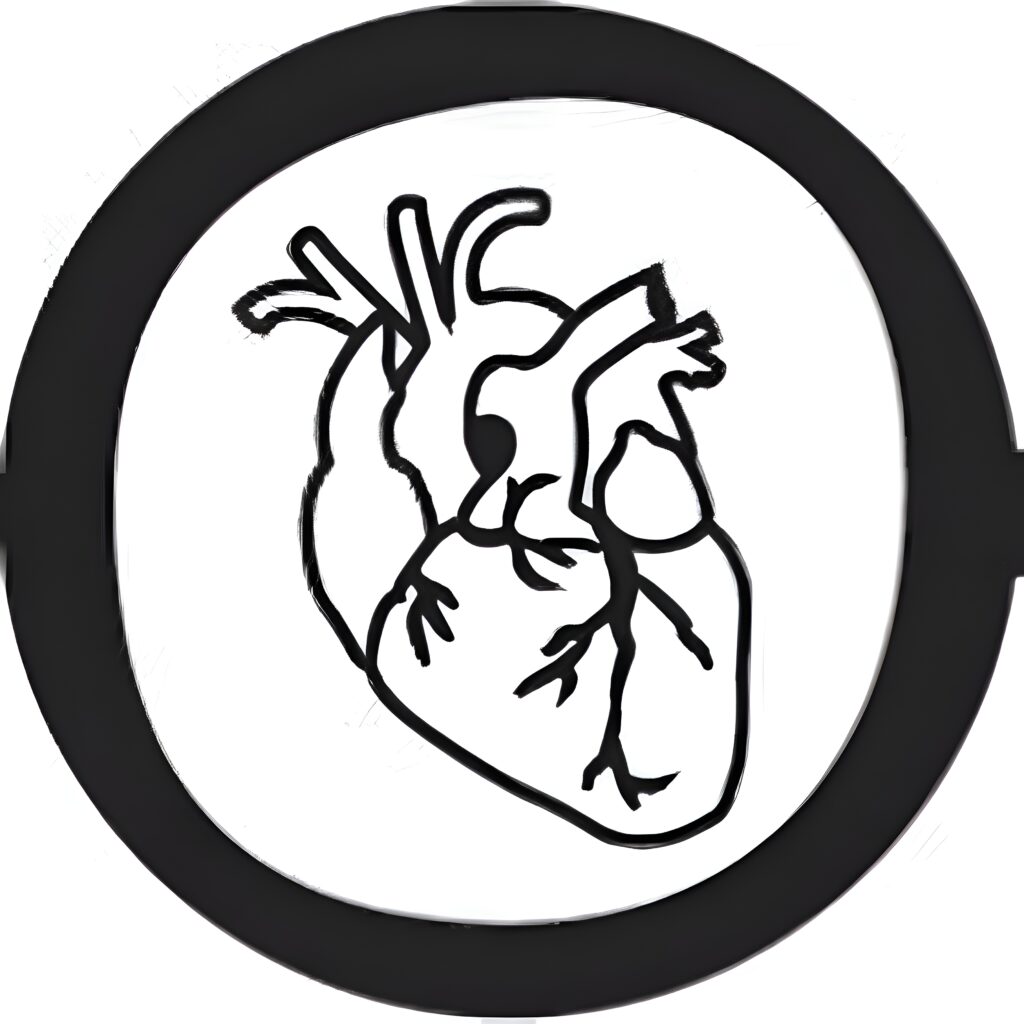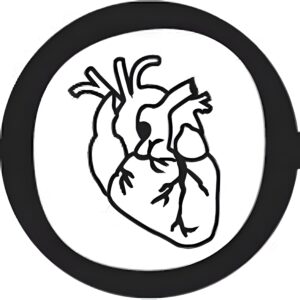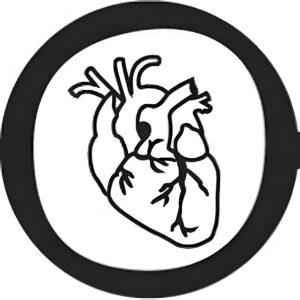
Blood Pressure & other Cardiovascular Topics (5.2)
- September 16, 2025
- 11:56 am
Summary
Review covers cardiac electrical conduction, ECG components (P wave, QRS, T wave), intrinsic/extrinsic regulation of heart function and blood pressure (preload, afterload, autonomic control), arterial/venous path and pressures, and blood flow pathway. Previews future discussion on cardiovascular drug targets like ACE inhibitors and beta blockers.
Raw Transcript
[00:00] Alright guys, this is the second part of week 5's review. We're going to be going over just little topics here and there that have to do with the heart, the electrical conduction system, the pathway of blood. So we're going to kind of bring a lot of the cardiovascular system ideas together in this review video.
[00:20] So the first thing we're going to talk about are ECGs. I basically just pointed out the different spots on an ECG and what they refer to. So we'll go through that quickly. We're going to talk about some of the extrinsic regulation of blood pressure, of the heart rhythm, of the heart beating, and how we maintain homeostasis. I gave you a handout that I'll go through again.
[00:40] Then we're also going to talk briefly about intrinsic regulation. So preload and afterload, I'll give you a better definition of afterload. I know I didn't give you one in class. And then lastly, I'm going to finish up with the blood circulation path and how blood travels from a different tube to a different tube to the capillaries through a different tube. So we'll talk about that.
[01:00] that as well. So let's start over here to the ECGs. ECGs stands for electrocardiogram or electrocardiograph. Actually I'm not sure which one it is. Look that up. ECG, electrocardiogram or graph? I would think it's a graph because it's showing your graph. But anyway, there's going to be about five distinct parts if I
[01:20] count it correctly. There will be your P-wave, your QRS complex, and then your T-wave. There's something different happening in each one. At P-wave, your atria are depolarizing.
[01:40] We're just going to say depolarizing. That means that they are electrically active. They're electrically charged. They're ready to contract. So they're going to contract basically right after this depolarization. Remember this is the electrical signal of the heart. Not necessarily the actual motion, but it's when there's a bunch of positive ions flowing in. So atrial will contract in between here.
[02:00] Then the QRS, this is the QRS complex that we call it. This is when the ventricles, so the big guys, are depolarizing. And at the same time, the atria are repolarizing. So that means they're returning back to respite.
[02:20] membrane potential. So as the atria return to rest, as they're relaxing, what the ventricle is doing? Activating. So they're depolarizing at the same time. But then the ventricles eventually have to repolarize as well and that's what happens in the T wave. So the ventricles are repolarizing. So they're returning to rest.
[02:40] repolarizing. Okay so that's what I went through with the ECGs. There are different ways that you can diagnose different conditions based upon what the ECG shows. You can look that up on your own time. It's really interesting. Ventricular fibrillation is really obvious because there's
[03:00] just no rhythm whatsoever. So you can tell a lot of different things by the ECG. We also talked about arterial pressure. So we take blood pressure, you know that it's systolic over diastolic, and the average is about 120 millimeters mercury over 80 millimeters of mercury.
[03:20] That just means a millimeter per kilogram. That's the average blood pressure. But blood pressure can be calculated very specifically and it can also change depending on what your body needs to do. And it can also change if you have a disease state or something has gone wrong. So we need to be able to basically
[03:40] regulate our blood pressure through homeostatic feedback mechanisms. So we're going to talk a little bit about both of those. First off, let's talk about the actual calculation. Arterial pressure or mean arterial pressure, I say to average, because it's a better word. Map equals the cardiac output, so how much your heart's putting out every minute, times
[04:00] How does your peripheral resistance, so how much resistance your arteries are giving you when blood is pumped out? So cardiac output also has its own equation. Think about it. How much blood is pumped out per minute? Well, that means we're going to be taking the stroke volume, so how much blood is being ejected per pump, specifically in the ventricles, because
[04:20] ventricles are going to be pumping through the arteries. Ventricles pump, measure the amount of volume per pump multiplied by your heart rate, which is in beats per minute. So therefore your cardiac output is how much blood you're pumping out every minute. So think about this.
[04:40] to increase either our resistance or our cardiac output, blood pressure is going to go up. If we decrease either side, blood pressure is going to drop. So this is a direct relationship, I'm not sure what that's called in a proportional relationship, in math.
[05:00] When one goes up, the other goes up. When one goes down, the other goes down. That's how I'm going to describe it. So, the way we can regulate it becomes in a variety of different forms. So I'm going to show you the sheet that I gave you which says, Barrow Receptors in Homeostasis.
[05:20] pressure, right? So baroreceptors means pressure. So when we look at baroreceptors, in the top, I think this is the top left for you, I could be wrong, it shows up on my screen weird. When homeostasis is disturbed and blood pressure decreases, well you need to now increase one
[05:40] So this guy is going down, that means that this has dropped, so we need to ramp this guy up. We need to bump up either the cardiac output or the resistance. So what does it do? Your sympathetic nervous system will be stimulated. So if you can read that. Sympathetic nervous system will be stimulated, release an epinephrine and oorepinephrine, which will vasoconstitute.
[06:00] strict smooth muscles in your arteries, narrowing the whole, increasing peripheral resistance, and your heart will actually contract a little faster. If it starts contracting faster, increase in heart rate, guess what, blood pressure goes back up. Okay, so we're increasing resistance, increasing heart rate, and also how strongly the heart is pumping, therefore,
[06:20] back up your arterial pressure. The reverse is true, say if your blood pressure is increasing, okay, so over here, in that case you want to chill out. So you're going to have your parasympathetic nervous system, the rest and digest section of your autonomic nervous system, de-stimulated, so therefore it's going to slow down.
[06:40] the heart, okay, slow down the heart, decrease the strength of the stroke, and also relax the smooth muscle of the arteries, therefore opening it up, decreasing its resistance, right? So the parasympathetic helps bring your blood pressure back down, specifically after like a bout of exercise. So you're exercising blood pressure pretty high.
[07:00] You're done exercising now, you don't need as high of blood pressure, so then your parasympathetic will kick in and start chilling out your body. Whereas during the exercise, well you needed more blood pressure to get blood all the way through your body as you're using it, so your sympathetic nervous system is actually stimulated when you are going out for exercise, which is really healthy for it.
[07:20] you because it trains your body to deal with stress in a proper healthy manner. Now I did talk a little bit about the way we know if it's sympathetic versus parasympathetic. So sympathetic nerve fibers, they originate in a very specific section of your spinal cord.
[07:40] It's in your thoracolumbar. thoracolumbar regions. So if I were to say a nerve is being stimulated from the thorax, you would know that it's a sympathetic nerve fiber. It's going to stimulate you to exercise to be very vigilant and ready for action.
[08:00] whereas the parasympathetic nerve fibers may originate in the other two, which is your cranial or cervical, cranial sacrum regions. So basically your lower sacrum and then your cranial nerves.
[08:20] There's a root ganglion coming from your C1, so your cervical 1 nerve. Well, you know, it's a craniosacral nerve. Therefore, it's going to be parasympathetic, so it's going to chill out the body, lower the heart rate, calm it down. Okay. Notice, though, when I was talking
[08:40] about these different nerve sections, it does something very specific. So when it's sympathetic, the heart contractions are going to be stronger and at the same time it's actually going to constrict, so basically tighten up the smooth muscle of the arteries too. Whereas if it's parasympathetic it's going to basically
[09:00] the strength of the stroke and it's going to vasodilate to decrease the peripheral resistance. Okay, those were types of extrinsic regulation of blood pressure and heart rate. So that's how we coin them because it's coming from somewhere outside.
[09:20] side of the heart, whether it's a nerve, whether it's a hormone too, like if you have adrenaline coursing through your body from your adrenal medulla, that can also stimulate some energy and some strong heart rate as well. There's also intrinsic regulation of the heart. This means that it's happening within the heart itself. And the two that I will talk about are the pre-lunging.
[09:40] in the afterload. The preload is basically how much volume of blood is in the ventricle right before contraction. This is what I want you to remember. The more blood that fills the ventricles, the stronger the contraction of the ventricles. This is called star
[10:00] scarling's law of the heart, scarling's law. That means that with more blood volume, the stronger, I'll say stronger, the contraction. Think about it as a slingshot.
[10:20] Okay, the more you stretch a slingshot, so the more the heart fills, the stronger it'll send off, the stronger it'll help. Okay, whereas if it's not filling up very much, it's not going to be very strong. Okay, but you also might ask this question, well, Mr. Jackson, when your heart rate increases for exercise, it doesn't have any effect.
[10:40] as much time to fill up. So it won't be stretching as much so you won't be pumping as much, right? Well, as you're exercising your blood is moving faster and faster and faster. So your ventricles actually fill up very quickly during exercise, still get a pretty good load of blood, stretch out pretty good so it can contract very strongly.
[11:00] So that was just a question that came up in class that I just remembered.
[11:20] blood out into the artery. So it's how strong that it's it's a completely different variable. So whereas this one is the volume, the afterload is the amount of pressure it needs to overcome to actually get the blood out. So I didn't really talk about that all that much.
[11:40] don't worry about it for a test. Now, pathway of blood. This is vital. Get it? Because it's like a vital organ. Okay. Blood originates in the heart for sake of argument. The heart is going to pump in the same vessel to vessel systematic
[12:00] way, whether it's either in the systemic circulation or pulmonary. If I say it's in the systemic circulation, that means that it's going to the body from the left ventricle. If I say it's in the pulmonary circulation, it's going to be going to the lungs from the right ventricle, either to or from either right ventricle.
[12:20] So systemic, it could be an artery and then eventually gets to a vein, comes back to the heart, and then it'll go to the pulmonary artery and back to the vein, and then to the systemic artery and back to the vein, and the cycle continues. Okay? So let's just talk about each vessel cell. Arteries, these are large, they are
[12:40] elastic really close to the heart because they have to stretch under a high amount of pressure. Okay so as the heart's beating your aorta is about the size of a garden hose. So it needs to stretch a lot as that blood is being pumped through it. Okay so it's very elastic. Whereas if you get down more near the arterioles these are going to be at
[13:00] little more muscular to help kind of propel blood through it. And then smooth muscle by the way, you can't control that. Once it gets through the arteries to the arterioles, which literally means tiny artery, it's going to go into the capillary. So this is where the action happens. This is where
[13:20] exchange occurs. So you're feeding your tissues with oxygen to nutrients if it's in the systemic circulation. Now if it's in the pulmonary circulation, so let's say in systemic, you're feeding yourselves.
[13:40] But if you are in the pulmonary circulation, you are going to be basically getting oxygen back into your cells at your lungs. This is in the alveoli, the little air sacs of your lungs. So oxygen is going to be in the pulmonary circulation.
[14:00] to be going into the blood, the capillaries in the alveoli, getting a lot of oxygen, expelling all the carbon dioxide, and then returning to the systemic circulation once it gets back to the hearts of the tissues. Great. From the capillaries, we go back through the venules, which means small veins.
[14:20] to the veins which are bigger and the biggest ones being your superior and inferior vena cava. You may have heard that lab vena cava means vein cave, big opening and then it returns back to the heart. Two sections I want to kind of point out. In the art of vena cava, you can see the veins.
[14:40] In the arteries, the blood is going to be moving quickly. So high velocity. And it's also going to be pushing on the walls of the arteries a lot. So it's high pressure as well. High velocity, high pressure.
[15:00] On the vein side, we're going to hop over here, there's going to be medium velocity, but there's going to be low pressure. So blood still has to come back relatively quickly.
[15:20] going to be at a very low pressure. The reason you for example when you donate blood they poke into a vein is because it's very low pressure so blood doesn't escape your body as quickly. If they poked you in an artery they should be fired first off and you would lose a lot of blood probably about a gallon in about a minute happens very quickly.
[15:40] are high pressure, high velocity. At the capillaries though, you need adequate gas exchange to happen. So these guys are moving very slowly. So slow velocity. Literally one blood cell can fit through a capillary at a time. So they're moving very slowly. It's like a very small
[16:00] stream that just came off a river and it goes through a tributary and then it goes into a tiny little creek. The water is moving very slowly, very slowly. That's the capillaries. But there's also an okay amount of pressure. So I'm going to say low to medium pressure because the nutrients in the blood
[16:20] to get out of the capillaries into the interstitial fluid into the cells. So there's got to be a decent amount of pressure to actually force all that out to get to the cells themselves. And then as we mentioned the last unit, albumin is going to be a big player in pulling a lot of that fluid back into the capillaries before it gets into the venous system.
[16:40] Let me just double-check that I got everything that I needed to from that diagram, which I did. We're happy about it. So next Tuesday, when we start talking, we're going to go a little more into depth about extrinsic regulation with drug targets. You may have heard of things called ACE inhibitors, beta blockers.
[17:00] alpha blockers, these are different classes of drugs that act upon the heart. Act upon the heart. They might like block sympathetic nerve signals, they might block parasympathetic, they might mess with the channels of the actual like pacemaker cells, whether it's a voltage-educated channel, a calcium channel. So we're going to talk about how
[17:20] those drugs can influence the activity of the heart next week. So stay tuned. Again, like and subscribe if you enjoyed this. Let me know if you have any questions in the comments below and thanks for watching. I really do appreciate it guys.


